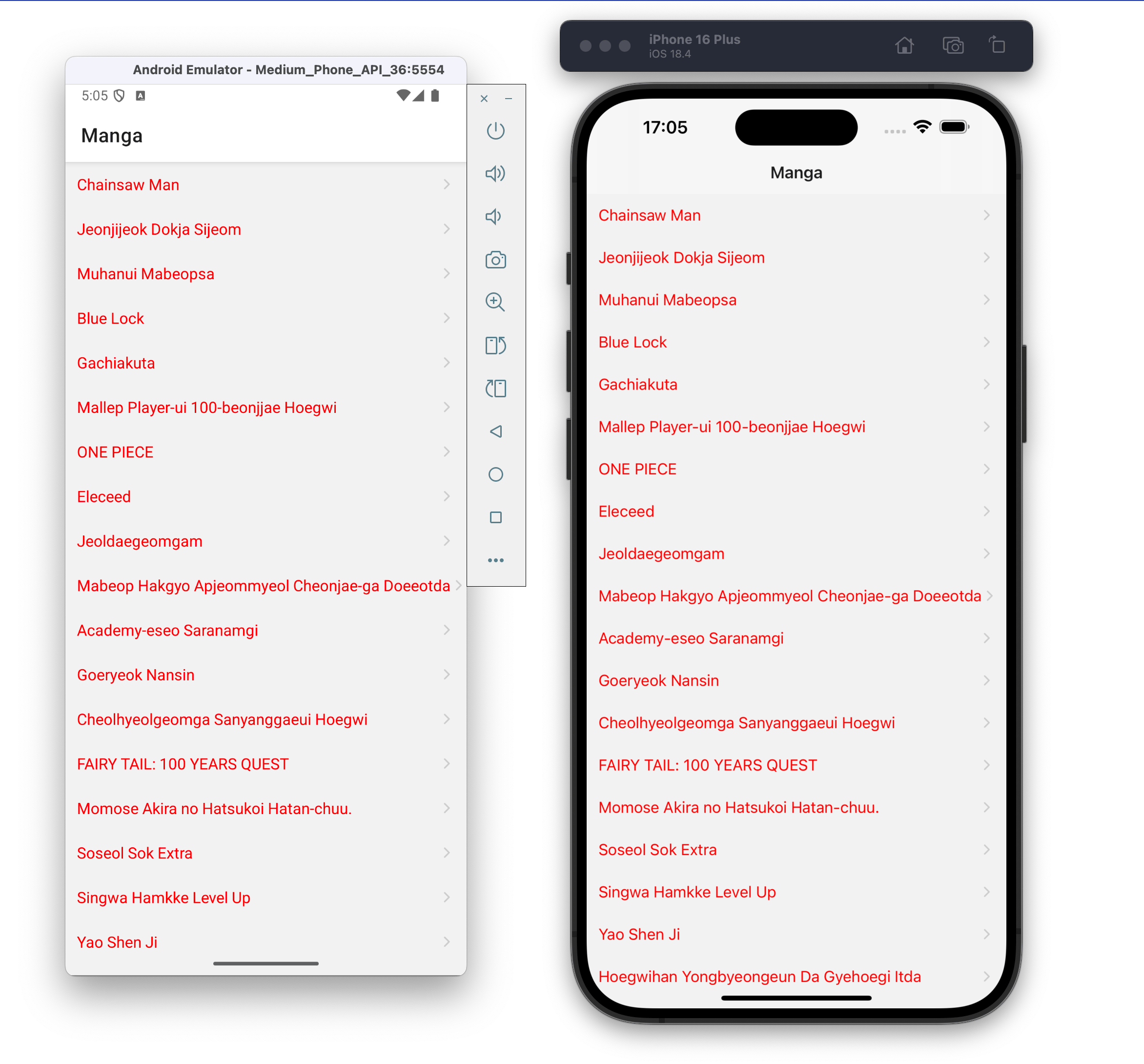In this quick post, let’s explore how to use content insets available within FlatList in React Native to ensure that the content is properly presented behind the header. This post is a continuation of Header blur effect in Expo Router.
Current approach: using useHeaderHeight hook
In React Native apps, FlatList is a component that renders a list of items. It is a common component that can be used to render a list of items in a scrollable container.
In previous tutorial, useHeaderHeight hook was used to get the height of the header and then use it to offset the content for iOS devices.
import { useHeaderHeight } from '@react-navigation/elements';
export default function HomeScreen() {
const headerHeight = useHeaderHeight();
return (
<FlatList
contentContainerStyle={{
paddingTop: Platform.OS === 'ios' ? headerHeight : 0
}}
/>
);
}The headerHeight is then applied as paddingTop to the FlatList component’s contentContainerStyle and it is made available using @react-navigation/elements library.
There’s nothing wrong with the approach of calculating the header height manually using useHeaderHeight hook. However, the core list view component in React Native provides a way to handle content insets by passing a couple of props to the FlatList component. However, FlatList, and more over the underlying ScrollView component, has a property called contentInsetAdjustmentBehavior that can be used to adjust the content insets of the FlatList component.
Using contentInsetAdjustmentBehavior and automaticallyAdjustContentInsets
Content insets define padding or margins that should be applied to scrollable content to prevent it from being obscured by system elements like the status bar, notches, or navigation bars. Without proper inset management, your content might extend under these UI elements, making parts of it inaccessible.
The FlatList component uses the same two props that ScrollView does: contentInsetAdjustmentBehavior and automaticallyAdjustContentInsets. The contentInsetAdjustmentBehavior prop can be set to automatic to automatically adjust the content insets based on the safe area and navigation bars. The automaticallyAdjustContentInsets prop can be set to true to enable this automatic adjustment.
<FlatList
data={trendingManga}
renderItem={renderMangaItem}
showsVerticalScrollIndicator={false}
contentInsetAdjustmentBehavior="automatic"
automaticallyAdjustContentInsets={true}
ListHeaderComponent={<Text style={styles.sectionTitle}>Trending Manga</Text>}
/>You won’t need to use useHeaderHeight hook anymore. The contentInsetAdjustmentBehavior and automaticallyAdjustContentInsets work together to ensure that the content starts at the appropriate position, accounting for the transparent header, without requiring manual height calculations. This change results in the same behavior as the previous approach:
